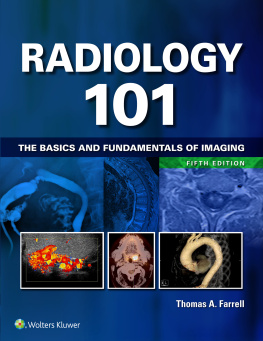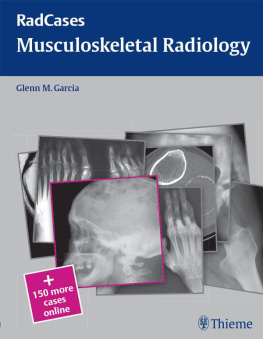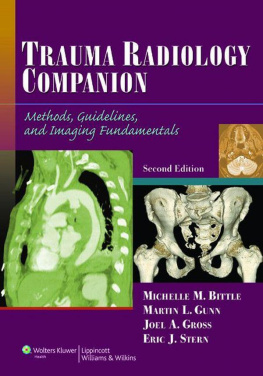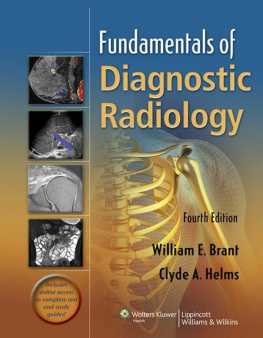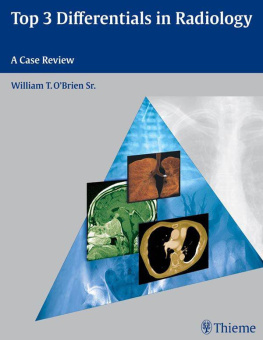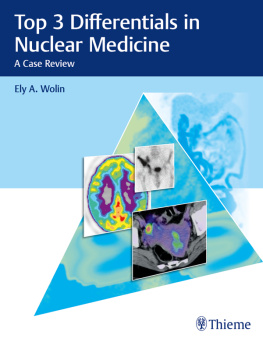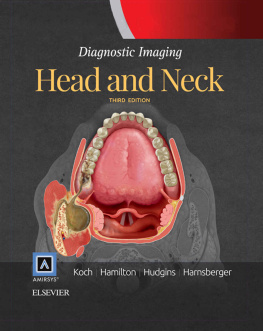Learning Radiology
Recognizing the Basics
Second Edition
William Herring, MD, FACR
Vice Chairman and Residency Program Director, Department of Radiology, Albert Einstein Medical Center, Philadelphia, Pennsylvania
Mosby
Front Matter
SECOND EDITION
Learning Radiology
RECOGNIZING THE BASICS
William Herring, MD, FACR
Vice Chairman and Residency Program Director
Department of Radiology
Albert Einstein Medical Center
Philadelphia, Pennsylvania

Copyright

1600 John F. Kennedy Blvd.
Ste 1800
Philadelphia, PA 19103-2899
LEARNING RADIOLOGY 978-0-323-07444-5
Copyright 2012, 2007 by Mosby, Inc., an affiliate of Elsevier Inc.
No part of this publication may be reproduced or transmitted in any form or by any means, electronic or mechanical, including photocopying, recording, or any information storage and retrieval system, without permission in writing from the publisher. Details on how to seek permission, further information about the Publishers permissions, policies, and our arrangements with organizations such as the Copyright Clearance Center and the Copyright Licensing Agency, can be found at our website: www.elsevier.com/permissions .
This book and the individual contributions contained in it are protected under copyright by the Publisher (other than as may be noted herein).

Notices
Knowledge and best practice in this field are constantly changing. As new research and experience broaden our understanding, changes in research methods, professional practices, or medical treatment may become necessary.
Practitioners and researchers must always rely on their own experience and knowledge in evaluating and using any information, methods, compounds, or experiments described herein. In using such information or methods they should be mindful of their own safety and the safety of others, including parties for whom they have a professional responsibility.
With respect to any drug or pharmaceutical products identified, readers are advised to check the most current information provided (i) on procedures featured or (ii) by the manufacturer of each product to be administered, to verify the recommended dose or formula, the method and duration of administration, and contraindications. It is the responsibility of practitioners, relying on their own experience and knowledge of their patients, to make diagnoses, to determine dosages and the best treatment for each individual patient, and to take all appropriate safety precautions.
To the fullest extent of the law, neither the Publisher nor the authors, contributors, or editors, assume any liability for any injury and/or damage to persons or property as a matter of products liability, negligence or otherwise, or from any use or operation of any methods, products, instructions, or ideas contained in the material herein.

Library of Congress Cataloging-in-Publication Data
Herring, William.
Learning radiology : recognizing the basics / William Herring. 2nd ed.
p. ; cm.
Includes bibliographical references and index.
ISBN 978-0-323-07444-5 (pbk. : alk. paper)
1. Radiology, MedicalStudy and teaching. I. Title.
[DNLM: 1. Radiographymethods. 2. Diagnosis, Differential. WN 200]
R899.H472 2012
616.07572dc22
2011006507
Acquisitions Editor: James Merritt
Developmental Editor: Andrea Vosburgh
Publishing Services Manager: Deborah Vogel
Project Manager: Brandilyn Tidwell
Designer: Ellen Zanolle
Illustrations Manager: Michael Carcel
Marketing Manager: Jason Oberacker
Printed in the United States of America
Last digit is the print number: 9 8 7 6 5 4 3 2 1 
Dedication
To my wife, Patricia,
and our family
Contributor
Daniel J. Kowal, MD, Computed Tomography Division Director
Radiology Elective Director
Department of Radiology
Saint Vincent Hospital
Worcester, Massachusetts
Preface to the First Edition
If youre the kind of person, like I am, who reads the preface after youve read the book, I hope you enjoyed it. If youre the kind of person who reads the preface before reading the book, then youre in for a real treat.
Suppose for a moment that you wanted to know what kind of bird with a red beak just landed on your windowsill (dont ask why). You could get a book on birds that listed all of them alphabetically from albatross to woodpecker and spend time looking at hundreds of bird pictures. Or you could get a book that lists birds by the colors of their beaks and thumb through a much shorter list to find that it was a cardinal.
This is a red-beak book. Where possible, groups of diseases are first described by the way they look rather than by what theyre called. Imaging diagnoses frequently, but not always, rest on a recognition of a reproducible visual picture of that abnormality. That is called the pattern recognition approach to identifying abnormalities, and the more experience you have and more proficient you become at looking at imaging studies, the more comfortable and confident youll be with that approach.
Before diagnostic images can help you decide what disease the patient may have, you must first be able to differentiate between what is normal and what is not. That isnt as easy as it may sound. Recognizing the difference between normal and abnormal probably takes as much, if not more, practice than deciding what disease the person has.
In fact, it takes so much practice, some peopleI believe they are called radiologistshave actually been known to spend their entire life doing it. You wont be a radiologist after youve completed this book, but you should be able to recognize abnormalities and interpret images better. By so doing, perhaps you can participate in the care of patients with more assurance and confidence.
In this text, youll spend time in each section learning how to recognize what is normal so that you can differentiate between such things as a skin fold and a pneumothorax or so that you can recognize whether that fuzzy white stuff at the lung bases is pneumonia or the patient simply hasnt taken a deep breath.
Where pattern recognition doesnt work, well try whenever possible to give you a logical approach to reaching a diagnosis based on simple yet effective decision trees. These will be little decision treessaplings with only a few branchesso that they are relatively easy to remember.
By learning an approach, youll have a method you can apply to similar problems again and again. Have you ever heard the saying Give a man a fish; you have fed him for today. Teach a man to fish, and you have fed him for a lifetime? Learning an imaging approach is like learning how to fish, except a lot less smelly. An approach will enable you to apply a rational solution to diagnostic imaging problems.
Next page
![William Herring Learning Radiology: Recognizing the Basics [with Student Consult Online Access]](/uploads/posts/book/310283/thumbs/william-herring-learning-radiology-recognizing.jpg)
